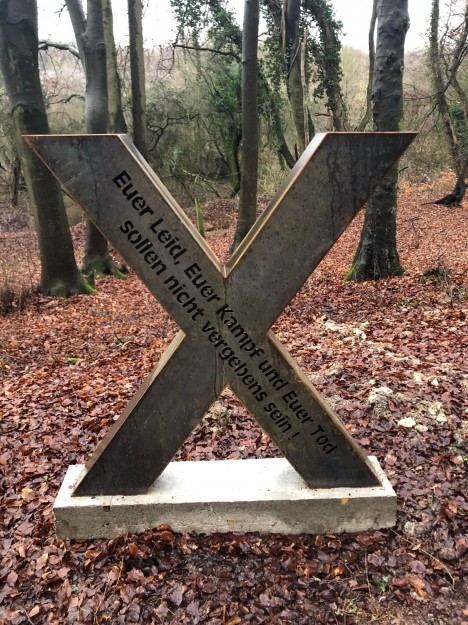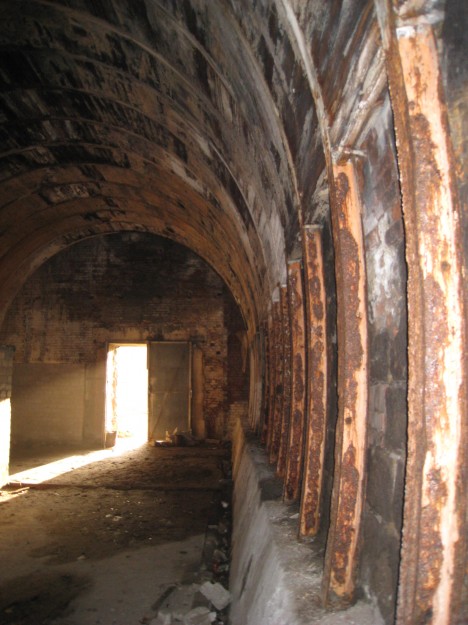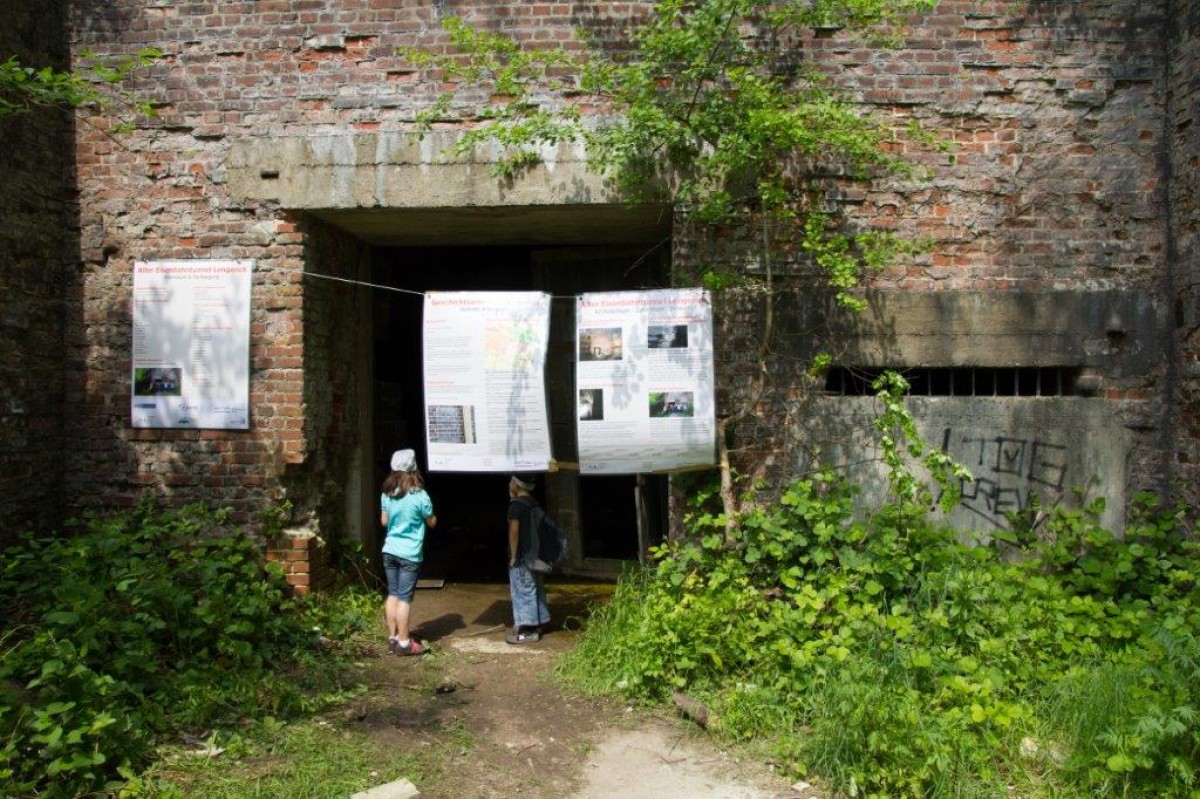
Working together as equals
A large X made of metal in the middle of the Teutoburg Forest represents the symbolic end of a project which lasted close on nine years. The large letter stands for vanished or forgotten places in the Münsterland – so-called “X places”. One of these places is the old railway tunnel in Lengerich in the Tecklenburg region. During the Nazi period, a secret subcamp (code-named “partridge”) of the Neuengamme concentration camp near Hamburg was maintained here. Between 1944 and 1945 more than 200 male prisoners produced armaments here, working in underground pipelines around 700 metres long. 20 of the prisoners died, with at least 14 of them being murdered.
The history of the tunnel was investigated in 2011 as part of the Innovation Office’s (AFO) “Expedition Münsterland”. The scholarly side of the work on the tunnel’s history was carried out by Dr. Sabine Kittel from the Department of History at the University of Münster and Thomas Köhler from Villa ten Hompel, an historical site maintained by the City of Münster, working with students in an advanced seminar. “Right from the beginning it was clear to us that the tunnel was highly important in terms of regional, German and European history, and that it had to be preserved as a multi-faceted place of remembrance,” says Thomas Köhler. “And it was equally clear for us that, without the collaboration of the people of Lengerich, we wouldn’t be able to progress any further with our research than through traditional work in archives.”
There is currently a broad discussion going on about the participation of citizens in academic and scientific processes – a phenomenon known as “citizen science”. The idea centres on cooperative research and professional collaboration between university researchers and non-specialists from the public, working together as equals – just as in the case of Lengerich. “We benefited greatly from the voluntary work contributed by a lot of people from Lengerich, including the Lengerich Railway Enthusiasts Club,” says Köhler. “Also, we had a lot of acceptance and understanding for our research work from the general public.”
The project is not about an infamous side of Lengerich, “but rather about an historical investigation of the tunnel as an authentic site for remembrance and reflection,” adds AFO director Dr. Wilhelm Bauhus. It was as a result of specific information and appeals in the daily newspaper under the motto “Who can provide information?” that a lot of people in Lengerich and its surroundings learned about the project. Dr. Alois Thomes, the Chair of the Lengerich Heritage Association, remembers the time well. “A lot of local people were very interested in being involved in the project and providing information. As a heritage association, we have a responsibility to history and to the past.”
This AFO project is a good example of a wider trend. According to a representative survey carried out by the Science Barometer (Wissenschaftsbarometer) organization in 2019, 50 percent of people in Germany can imagine supporting research activities or becoming actively involved in them. The opportunities offered by Citizen Science are manifold: from drawing up research questions and designing methods of collating and analysing data to communicating research results. In the view of those people who advocate an opening-up of science, Citizen Science is the way to make it more democratic and make research results “more socially robust”. Critics of the idea, on the other hand, speak of a “deprofessionalisation of academic research” and warn of a possible loss of quality.
For the tunnel project in Lengerich, though, there is absolutely no loss of quality. “If documents hadn’t been made available, if clubs and associations hadn’t provided information, if we hadn’t been able to undertake interviews with local witnesses, we wouldn’t have had such a good stock of sources for our historical investigations,” says Thomas Köhler. In particular, it is research projects in the field of history which rely on collaboration with the general public. The term “public history” – in use since the 1970s – describes the enormous potential which members of the public have for academic research. “Our experience shows that projects dealing with the Nazi period in particular have triggered numerous debates in society and in the academic world,” says Wilhelm Bauhus, who has been involved in a large number of Citizen Science projects over the years. Very much in line with the idea of public history, the experts put together a travelling exhibition which attracted a lot of visitors from Lengerich and from schools, as well as in memorial sites relating to the Nazi period such as Villa ten Hompel and the Neuengamme concentration camp memorial.
The project was officially concluded on 27 January this year – 75 years after the liberation of the former concentration camp Auschwitz. The symbolic X and an information board close by the tunnel provide a reminder of its history. Several hundred people attended its inauguration. “A new culture of remembrance has grown up in Lengerich which has contributed to the identity of the entire community,” says Alois Thomes. “The experience of working with Münster University over the past few years has created an appetite for more,” he adds. “Lengerich has a lot more to tell.”
Citizen Science at Münster University
Münster University has many years of experience with a variety of Citizen Science projects. The Münster University Citizen Science Association strengthens the value of the involvement of members of the public and raises awareness of the potential of Citizen Science for research projects. With a view to providing a more strategic alignment for the subject at the University, the Association is drawing up guidelines and criteria for it. Also, the Association’s members advise the Rectorate and act as contacts for researchers and citizens alike.
In order to stimulate more Citizen Science projects, the University is this year – for the second time – starting a Citizen Science competition which is being financed by the University of Münster Foundation. With immediate effect, applications for funding can be made by new projects, as well as by any already in existence, in which Münster University researchers work together with members of the public on specific issues. Funding will be granted to two projects, each to receive 7,500 euros and with a freely selectable duration of up to two years.



